Healing Flows is a research project that aims to tackle the challenge of creating a healthy mobility network in our cities. It is also one of the projects from IaaC studio Internet of Buildings.
Introduction
To promote health in mobility planning is an increasing focus in urban policies worldwide. However, there is a lack of holistic understanding on how citizens’ health is affected in the process of movement. Street design, the fundamental elements of citizens’ mobility activities, has not been used as a driver of change towards a healthier city. To tackle this challenge, our project allows urban planners and stakeholders to design targeted interventions that promote “healthier streets”, through a combined evaluation of health risk and mobility flows on urban streets.
The methodology is applied in the area of study in Sant Martí, Barcelona.
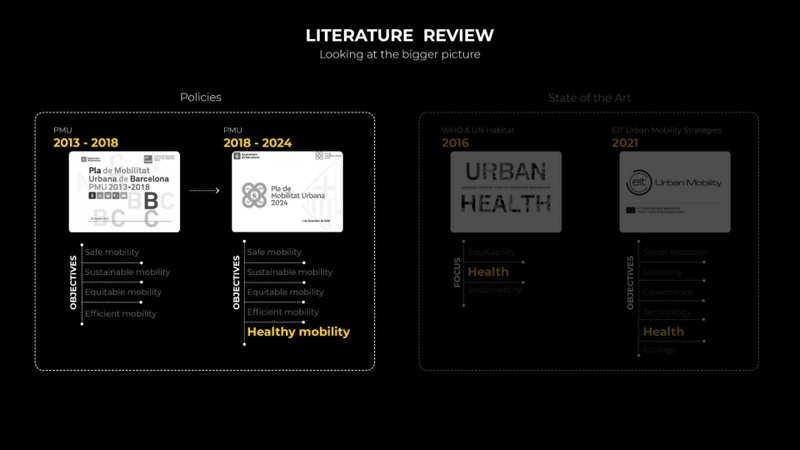
Methodology
To address the identified challenges, this project methodology starts by studying two aspects of a healthy network: agent flows and network health. Based on these two umbrella attributes and segmented road networks, we go through the process of environmental quality index establishment, agent-based simulation, health risk analysis, health evaluation of agent flows, and generation of targeted “health pills” interventions.
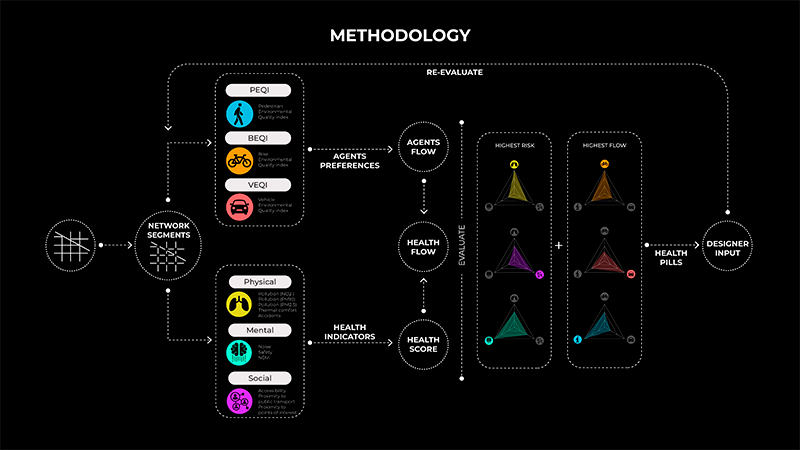
Agent Flows
Environmental Quality Index
PEQI, BEQI, and VEQI refers to the Pedestrian/Bicycle/Vehicle Environmental Quality Index. It is based on research by the San Francisco Department of Public Health and by Sanders and Cooper (2013), which evaluates the street features that make it more walkable /cyclable/ drivable for different street users.
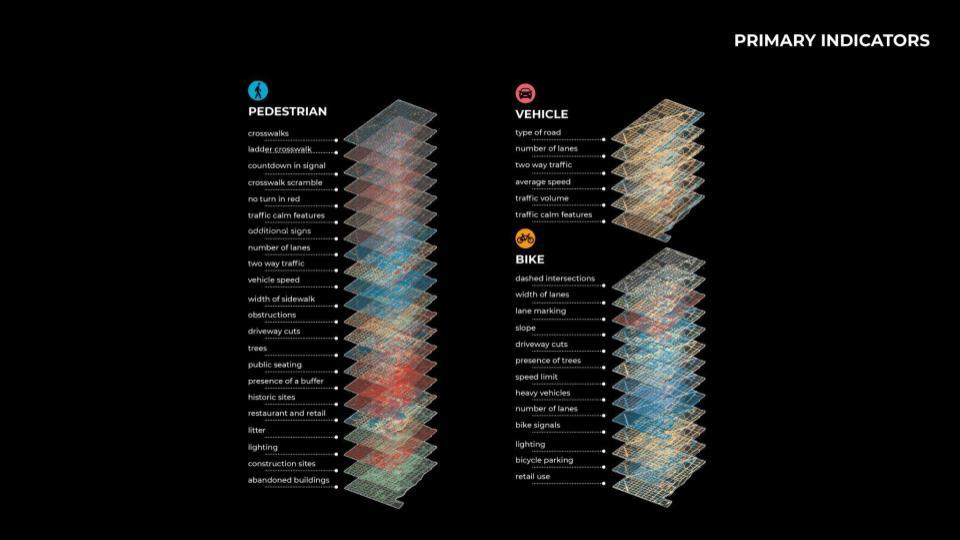
Agent-based simulation
To identify which street segment has higher flow of pedestrian, bike and vehicle, we designed an agent based algorithm. The algorithm simulates the path of the population, where each person is an agent.Our algorithm requires two types of data: the geolocation origin and destination of each agent, and a street network.
- The agent geolocations are extracted from a smartphone geolocation tracking dataset. We extracted their transport mode and their origin and destination.
- The street network contains the PEQI, BEQI and VEQI index that instruct the agents’ pathfinding process.
From this analysis we simulated 8439 flows of people divided into pedestrians, bikes and vehicles networks. These 3 flow attributes are then transferred to an integrated network to calculate the dominant agent type passing through a street segment.
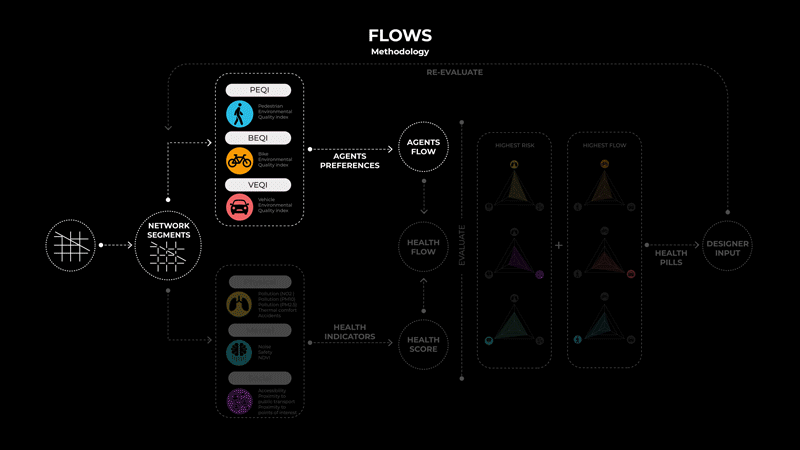
Network health
We evaluate how different agents’ health is affected on the street from three categories: physical health, mental health, and social health.
Physical health risk: Physical health sector involves factors that pose immediate threats to the agents’ health. Air quality (NO2, pm10, pm2.5 pollution), thermal comfort and number of accidents by segments are considered in physical health.
Mental health risk: Mental health sector includes factors that correlate with mental stress based on our research. Noise pollution, visibility and NDVI (Normalized Difference Vegetation Index) are considered for mental health.
Social health risk: Social health sector focuses on factors that affect social inclusion of the travelling agents. Street network accessibility, proximity to amenities, and proximity to bike and car parking are taken into consideration.
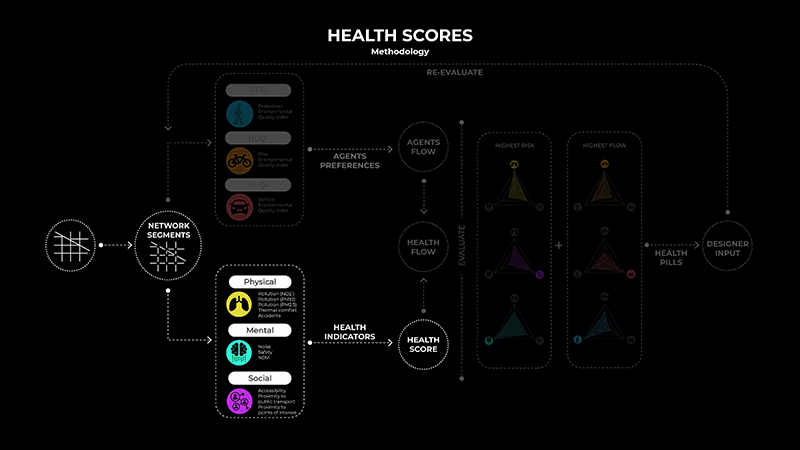
Evaluation & Intervention
After obtaining the health scores and the flows of our network, we evaluate and identify the segments with the highest health risk, and their dominant flows. After selecting segments, targeted “Health Pills” are introduced and customized as interventions.
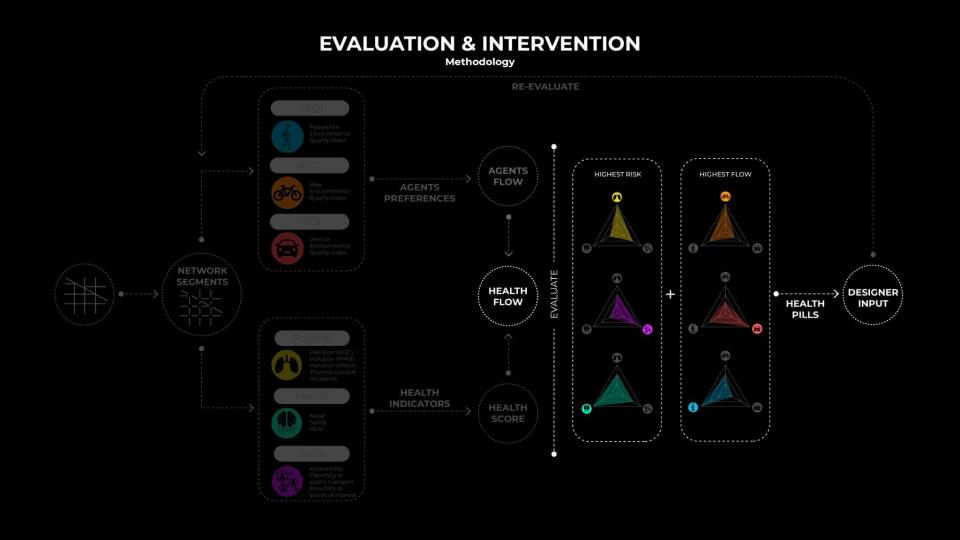
The following spider graphs summarize our findings in evaluation.
- In relation to network health, the mental risk of our network is the highest one.
- In terms of agent flows, vehicle and bike flows are more distributed on the network, while pedestrians are more concentrated.
We used these patterns to control the threshold of the highest risk in 3 health categories and analysed dominant flows of these risky segments.

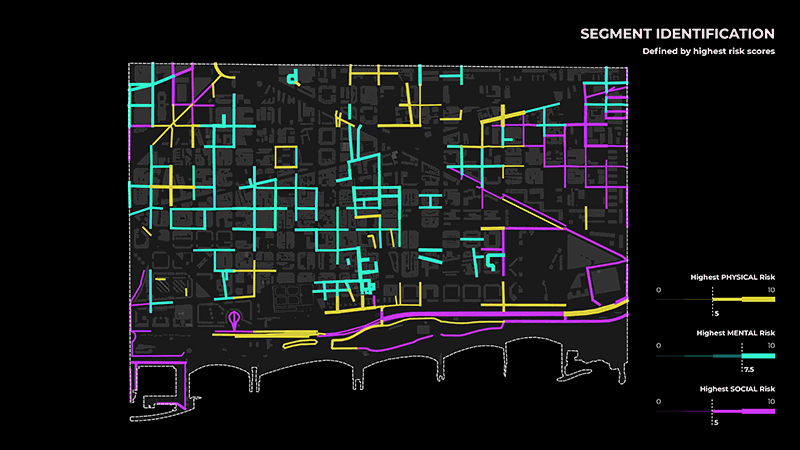
To address these health risks identified, We define 3 lines of actions, sustainability, inclusion and comfort.
Each line of action is associated with a health score and specified based on the predominant agent that flows through the segment. Thus, nine “Health pills” are proposed for our network. While the vehicle focused pills aiming at “pushing” healthier modal shift, the pedestrian and cyclist focused interventions create “pulling” effect for quitting unnecessary vehicular usage.
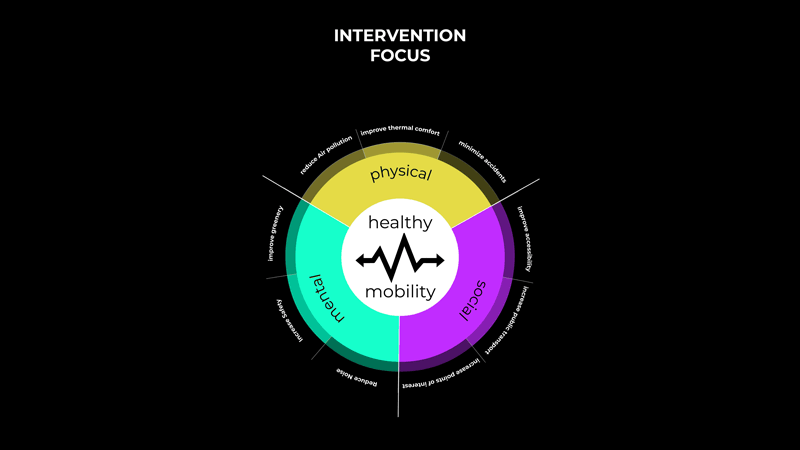
To apply these health pills we used the typical Barcelona street section and modified it into 9 typologies to address each of the 9 situations. Each pill includes a collection of guidelines.


As an example, we select a segment with low social health and dominated with pedestrian flows. The “Health Pill” is Pill G. Being aware of the potential to increase public amenities and street accessibility, designers and stakeholders could bring in the local context and have a more targeted discussion as well as awareness of the outcomes.
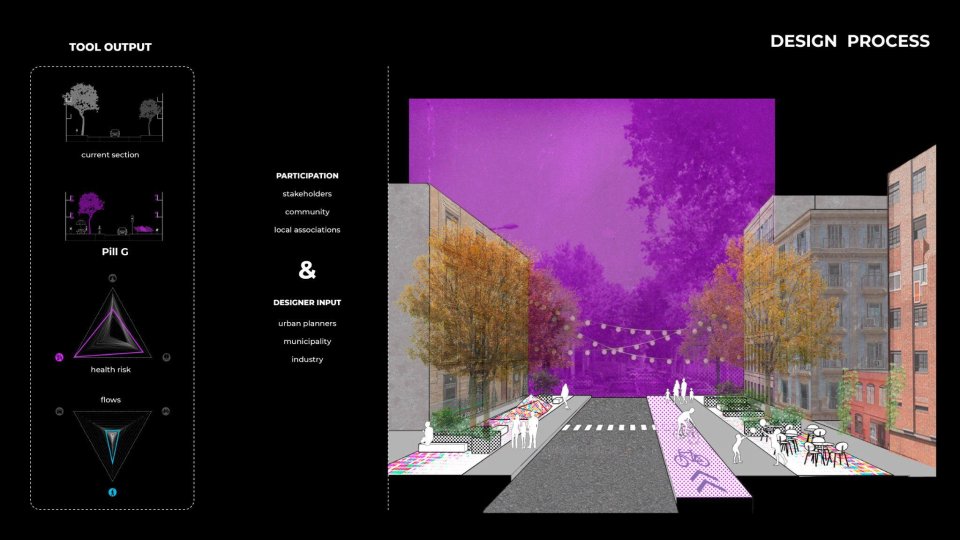
The system allows the design input to be reintroduced and re-evaluated to understand the global network impact that affects the flows and health. The final desired output could be obtained through this feedback loop.
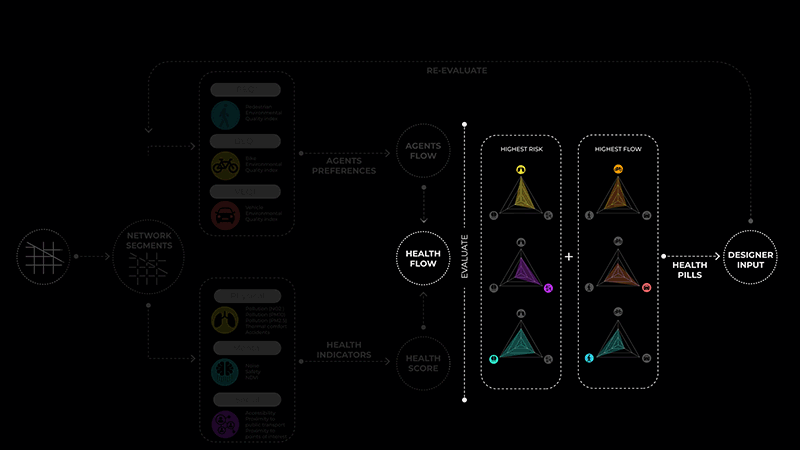
Conclusion
With Healing Flows we propose a data driven process to improve the health mobility quality of Barcelona. To aims this goal, we analysed flows of people through multiple transport mode, and how they are affected by health issues. From these analyses, we introduce a methodology to choose the best “street pill” inside a catalogue of interventions.
Explore our analysis and evaluation in detail here.
Explore our agent-based algorithm source code here.
Healing Flows is a project of IAAC, Institute for Advanced Architecture of Catalonia developed at Master in City & Technology in 2020/21 by students: Adriana Such, Diana Roussi, Dongxuan Zhu, Hebah Qatanany, Tugdual Sarazin and faculty: Angelos Chronis, Iacopo Neri, Mahsa Nikoufar and Androniki Pappa